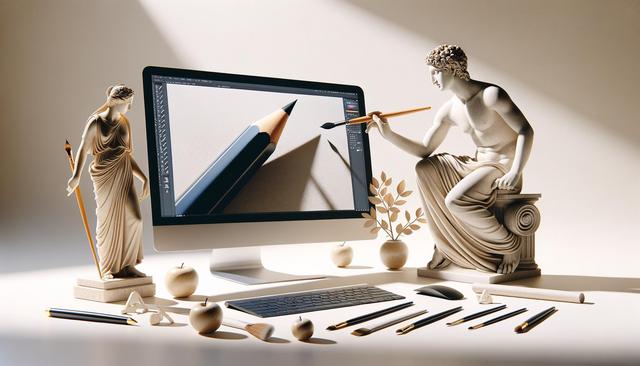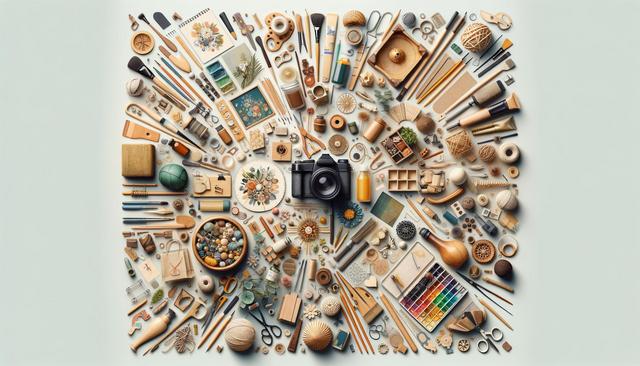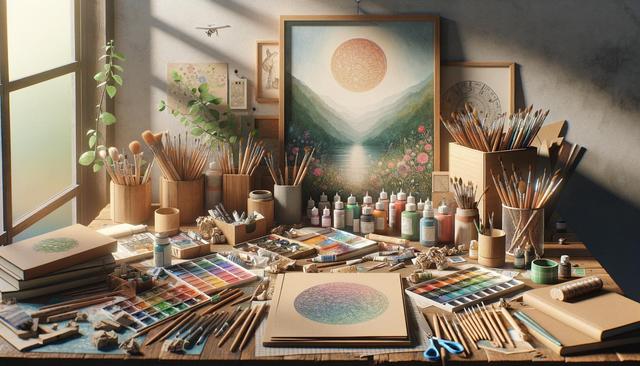Art Portfolio Tips: Impressing Galleries and Clients Online
Creating an impressive online art portfolio is essential for artists looking to capture the attention of galleries and clients.

Understanding Your Audience
When building an online art portfolio, understanding your audience is crucial. Whether you’re aiming to attract galleries, potential clients, or both, knowing who will view your work can guide the presentation style and content. Galleries often look for consistency, technique, and originality, while clients might be more interested in the emotional connection or aesthetic appeal of the pieces.
Consider conducting a bit of research into the preferences of your target audience. This can include exploring what trending art styles are currently favored by galleries or what themes resonate with buyers. By tailoring your portfolio to align with these insights, you increase the likelihood of making a memorable impression.
Start by asking yourself a few questions:
- Who are you trying to reach with your portfolio?
- What are their interests and preferences?
- How can your work satisfy their expectations?
Answering these questions will help you curate your portfolio with pieces that not only showcase your talent but also speak directly to the audience you’re trying to engage.
Curating Your Portfolio
Curating an art portfolio involves more than simply compiling your best work. It is about creating a cohesive narrative that reflects your artistic journey and vision. Begin by selecting pieces that best represent your style and the message you wish to convey. These should be your strongest works, demonstrating a range of skills and creativity.
Consider organizing your portfolio thematically or chronologically, depending on what best tells your story. Each piece should contribute to the overall theme, ensuring that viewers can follow your artistic evolution and understand your unique perspective.
Additionally, provide context for each artwork. Incorporate brief descriptions that explain the inspiration, process, or technique behind the piece. This not only educates the viewer but also deepens the connection to your work.
Remember, less is more. A well-curated portfolio with a limited number of outstanding pieces is often more impactful than an extensive collection of varied quality.
High-Quality Visuals
The visual representation of your artwork online is paramount. High-quality images are non-negotiable as they directly influence the perception of your work. Invest time in capturing professional-grade photographs or scans of your pieces. This ensures that the colors, details, and textures are accurately represented.
When photographing your work, consider the following tips:
- Use natural lighting to avoid harsh shadows or reflections.
- Ensure the artwork is level and centered in the frame.
- Edit images to correct any distortions or color inaccuracies.
For digital designs, ensure the files are uploaded in high resolution to avoid pixelation. Offering viewers the option to zoom in on details can also be beneficial.
Remember, the goal is to present your work in the best possible light, making it easy for viewers to appreciate the intricacies and quality of your art.
Crafting a Professional Presentation
A professional presentation of your online portfolio can significantly influence how it’s received. This includes not only the layout and design of the portfolio but also the user experience. Choose a clean and simple design that allows your artwork to take center stage. Avoid cluttered pages and excessive text that can distract from the visuals.
Ensure your portfolio is easy to navigate. This means employing clear categories, intuitive menus, and a responsive design that works across different devices and screen sizes. A seamless user experience keeps viewers engaged and encourages them to explore more of your work.
Additionally, consider including a personal statement or artist biography. This provides insight into your creative background and influences, helping to establish a connection with the viewer.
Finally, ensure your contact information is easily accessible, inviting potential clients or galleries to reach out for inquiries or collaborations.
Building a Strong Online Presence
In today’s digital age, having a strong online presence goes hand in hand with maintaining an art portfolio. Social media platforms can be powerful tools for artists to showcase their work and engage with a wider audience. Regularly share updates, behind-the-scenes content, and new projects to maintain interest and attract potential opportunities.
Engage with your audience by responding to comments and messages, and participate in art communities and discussions to build relationships within the industry.
Moreover, consider starting a blog or vlog where you can delve deeper into your creative process or discuss topics related to your art. This not only adds value to your online presence but also positions you as an authority in your field.
Remember, consistency is key. Regularly updating your portfolio and social media channels ensures that your audience stays engaged and interested in your work.
Conclusion
Creating an impressive online art portfolio requires careful consideration and effort. By understanding your audience, curating a cohesive collection, ensuring high-quality visuals, and crafting a professional presentation, you can effectively showcase your talent and attract galleries and clients. Furthermore, building a strong online presence complements your portfolio, expanding your reach and engagement in the art community. With these strategies, your art portfolio will stand out, leaving a lasting impression on those who view it.





